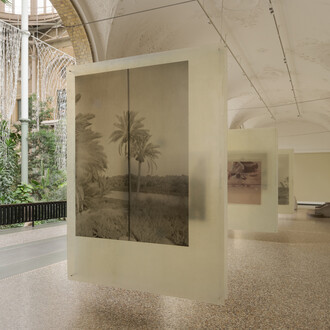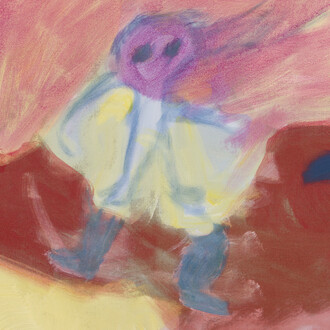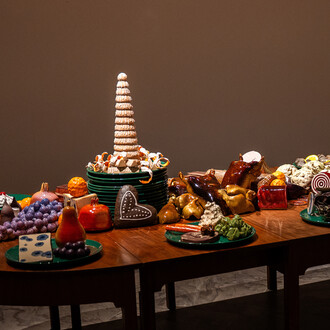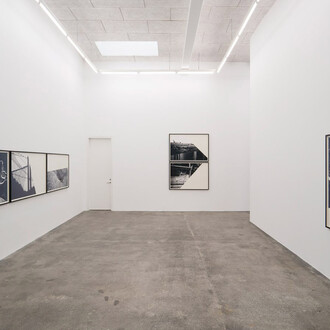Once upon a time there was a swamp on the outskirts of the city, next to a timber pit and a hospital for prostitutes with venereal diseases. Today this location is considered the city centre, and you can find one of Copenhagen’s major icons with its golden Parisian-style dome here.
The Glyptotek building is a work of art in itself. An architectural monument in the heart of Copenhagen, it provides an extraordinary setting for the Glyptotek’s antiquities and 19th-century art. But what stories lurk behind the façades of this iconic building with its myriad of marble, mosaics and colours?
The exhibition will provide you with a glimpse of what is concealed behind the richly decorated façades, outlining the methods of the architects and what it was like to work for the brewing magnate Carl Jacobsen, who had strong opinions about what the buildings should finally look like.
The exhibition is a reinstallation of the special exhibition Behind the façade – discover the architecture of the Glyptotek, which was displayed at the museum from May 17, 2023, to February 18, 2024.
The temple of beauty
The Glyptotek was built by the brewery owner Carl Jacobsen in 1897, after he and his wife Ottilia Jacobsen had donated their art collection to the public. He named his museum ‘Glyptotek’ (meaning ‘a collection of sculptures’) after the Greek words glyptos (‘carving’ or ‘sculpting’) and theke (a place where something is collected or displayed).
There was no doubt about the vision for the museum. It was not a traditional museum that Carl Jacobsen wanted. He wanted to construct a “temple of beauty”, in which art could speak to everyone, and in which the architecture would provide a magnificent setting.
One museum, three buildings
Today, the Glyptotek comprises three different buildings. The first part of the museum was designed by one of the greatest architects of the time, Vilhelm Dahlerup, famous for the Royal Theatre, the National Gallery of Denmark, the Lake Pavilion and Queen Louise’s Bridge – all in the heart of Copenhagen. However, it soon became apparent that the building was not large enough to accommodate the growing art collection. This called for expansion of the museum. So, in 1906, Carl Jacobsen inaugurated not only an extension designed by the architect Hack Kampmann, but also a Winter Garden designed by Vilhelm Dahlerup.
In 1996 the museum acquired yet another extension, this time designed by the Henning Larsen architecture firm. Both Hack Kampmann and Henning Larsen were also famous Danish architects. Kampmann is particularly famous for the Copenhagen Police Quarters, Aarhus Theatre and Marselisborg Castle, while Henning Larsen and his firm are known for the Ministry of Foreign Affairs building in Riyadh, Copenhagen Opera House and "The Wave" in Vejle.
Architecture in a league of its own
At first glance, the architecture of the Glyptotek may seem a bit old-fashioned. However, if you take a really close look behind the façade, you will discover all sorts of modern materials and construction methods. For example, Vilhelm Dahlerup and Hack Kampmann were not afraid of making use of brand new, contemporary industrial materials such as concrete, iron and steel, alongside traditional materials such as brick and marble. Carl Jacobsen invited Italian mosaic specialists to Denmark to create the unique mosaic floors of the museum. Throughout the museum, the daylight from modern skylights plays a unique role in terms of how we experience the architecture and the sculptures.
Visitors can look forward to a close encounter with the unique architecture of the Glyptotek in an exhibition featuring photos, drawings, films, models and installations that display samples of the buildings’ structures.
The design of the exhibition is a collaboration between the Glyptotek and JAC Studio.
















